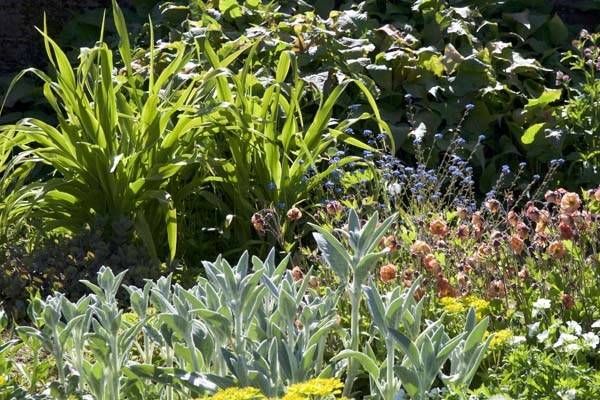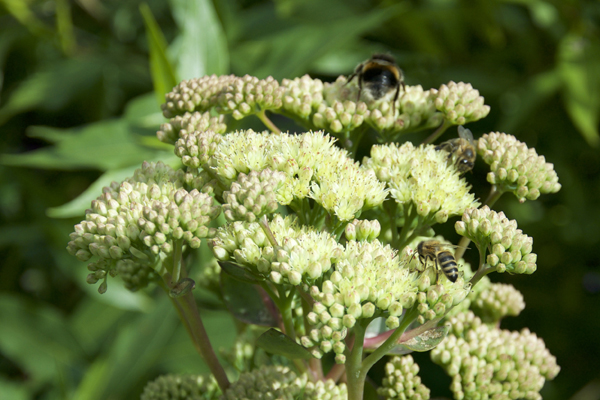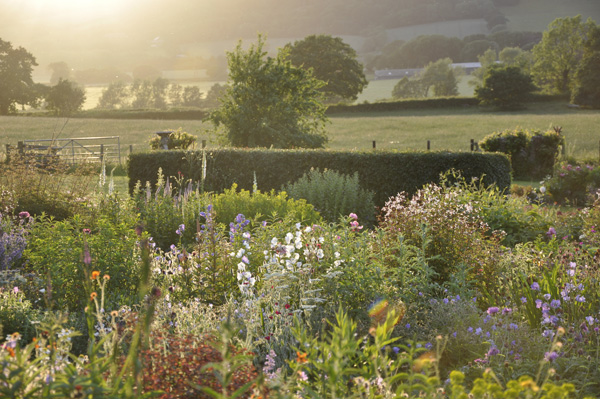How To Create A Border
Perennials are the most diverse group of garden plants. They come in all shapes, sizes, flower colour and blooming times this means they are an essential element in any garden. Whether you are looking for a cottage garden look or a more modern grass based border, perennials tick all the boxes.

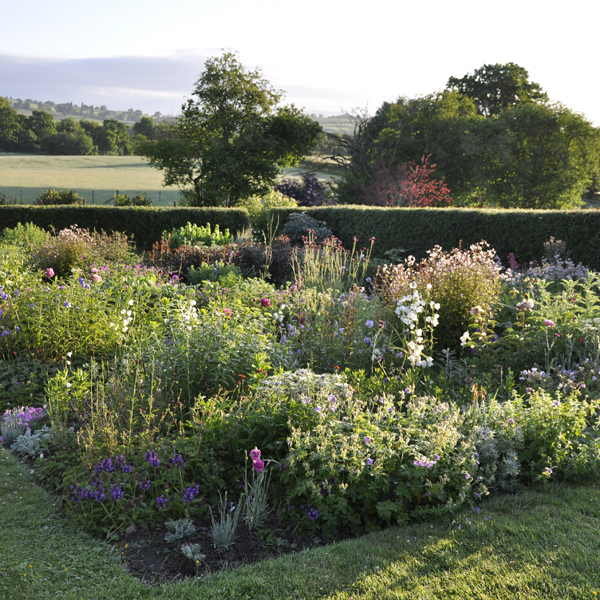

The back garden at White Hopton Farm 2022 in different months: May & June & July
How To Start Planning A Border
I build up my borders in layers, creating the picture as I go, working from front to back. What I am aiming for is a kind of rhythm, which will be created by plants that differ in height, colour, and flowering time. If I am undertaking a big project, such as a whole new border, I plan the scheme out on a piece of paper, drawing a circle for each plant variety. This stops me from repeating plants and making the border too regimented. I tend to group each variety together, and then ‘drift’ the groups across the soil, making irregular, overlapping shapes and avoiding straight lines. Even if you don’t have a garden style in mind, designers advise us to plant in groups of three, but as long as you grow sufficient key varieties in large numbers, less-critical varieties can be added in ones or twos. These will balance the border by filling the space between the larger groups and stop it from looking ‘blocky.'
Key Plants
The mainstays of the scheme are the plants that flower the longest and provide the most structure. These are your key plants: they tie the border together and allow the eye to drift around the garden so that every inch can be appreciated. To provide the garden with maximum colour, select key plants for each different season.
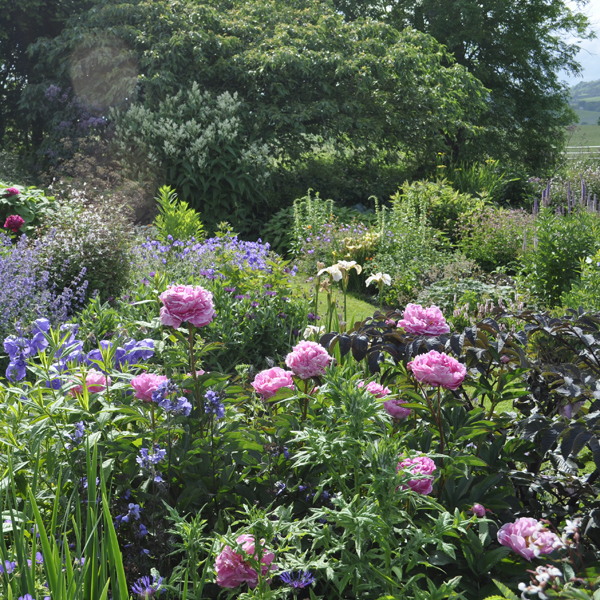
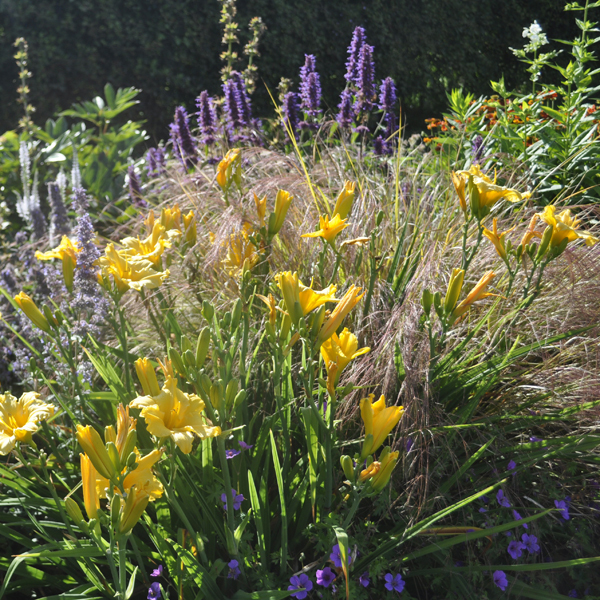
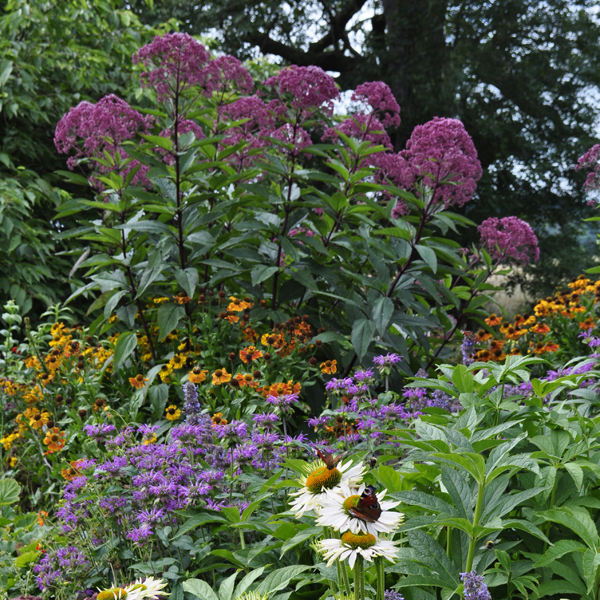
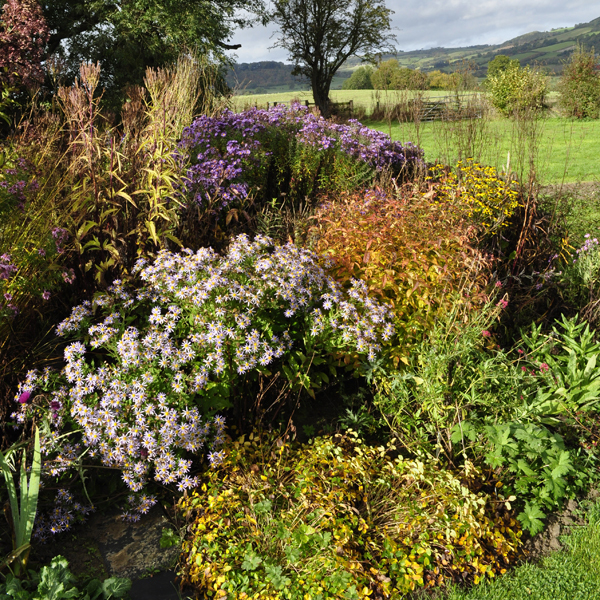
Key mounding plants: Peony 'Auguste Dessert' (June) Hemerocallis 'Beloved Return' (July), Eupatorium maculatum 'Riesenschirm' (September), a variety of Aster blend well with the autumn foliage of Gillenia trifoliata (October)
Plant Shapes
For me the shape of a perennial and how it grows is more important than flower colour. Perennials come in many different forms and to make choosing easier, they can be divided into different groups; edging, mounding, upright, tall and focal.
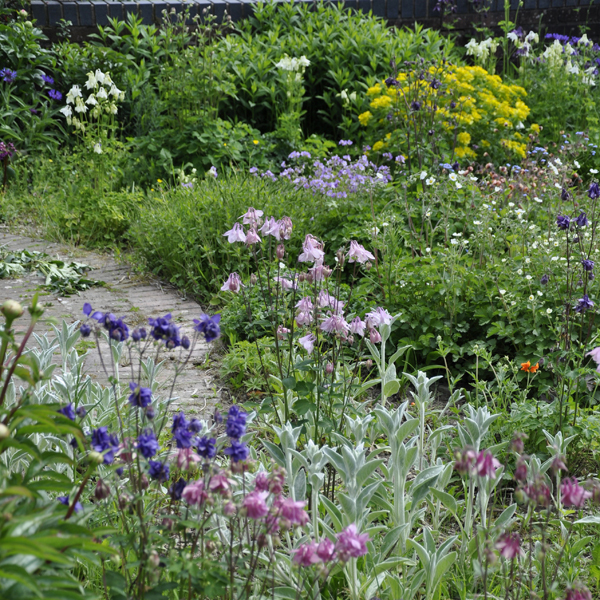

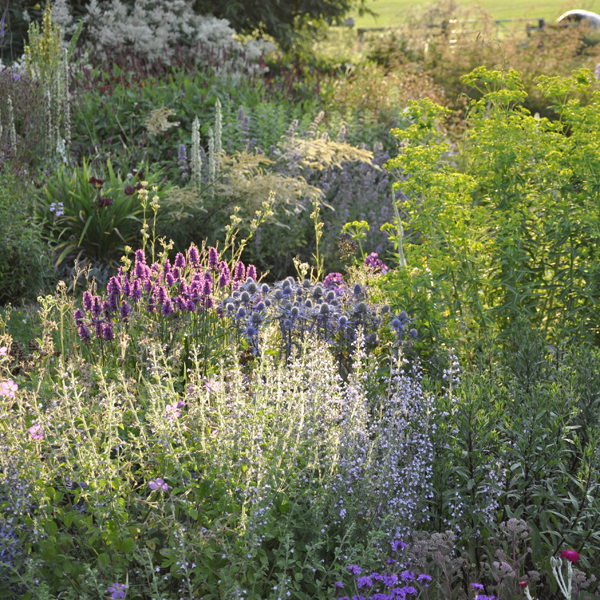
Two borders in May: Aquilegias (left) add cottage garden type colour, while Euphorbia polychroma adds shape and colour. The leaves of Peony 'Golden Frolic' (centre) are golden in spring and compliment the lemon flowers of Geum 'Lisanne'. Betonica officinalis 'Hummelo' (right) is a colourful focal point to the more muted colours of the plants that surround it.
Flower Colour
Whether from flowers or leaves, colour brings glamour into the garden and is often the first element we notice. I have included suggestions for combining colours, but the plants you choose will inevitably reflect your own personal preferences.
Seasons Matter
For colour in your garden throughout the year, plan ahead to ensure summer- flowering perennials take over from your key spring plants. You can then keep the show going with others that bloom in autumn.
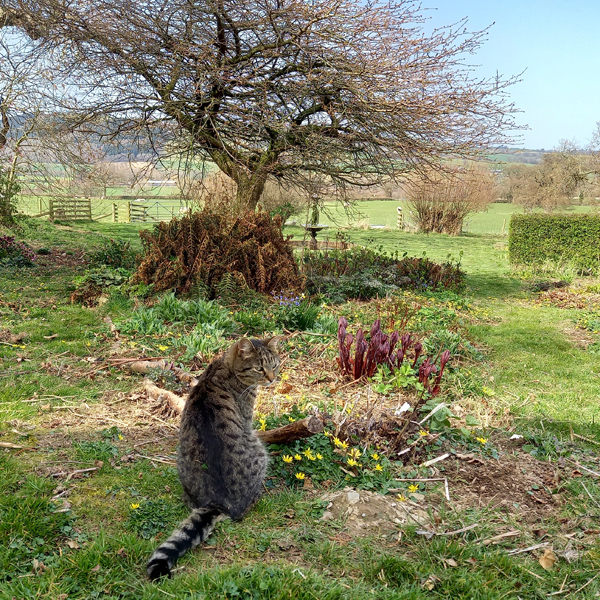
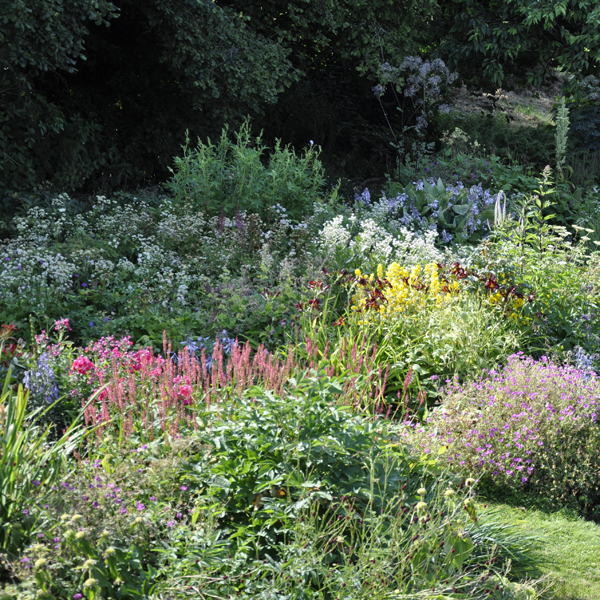
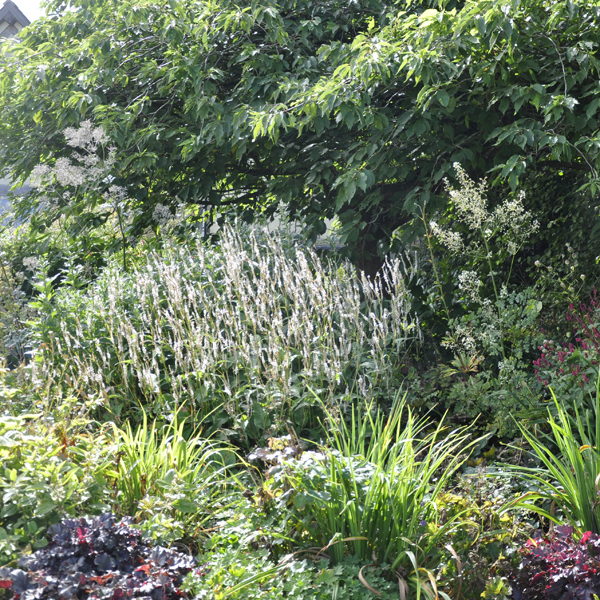
Plants are only starting to emerge in this shaded area of the garden in April (left), by June the majority are in full bloom (centre). Come late August some have finished blooming, while others such as Perscaria amplexicaulis 'Alba' are looking their best.
Be Patient
However carefully you prepare, things may not go strictly according to plan. In the process of choosing plants, some may not be available, while others not on the list catch your eye. Its inevitable that plants will occasionally die. These can be replaced or, if you let things unfold naturally, more vigorous plants will fill the gaps, as will perennials that have seeded around. This is the beauty of gardening – like nature, it needs to evolve organically. Above all a gardener must learn to be patient because the garden will take a number of years to reach its full potential.
More about how to create a garden and what plants to grow can be found in Claire Austin's Book of Perennials
